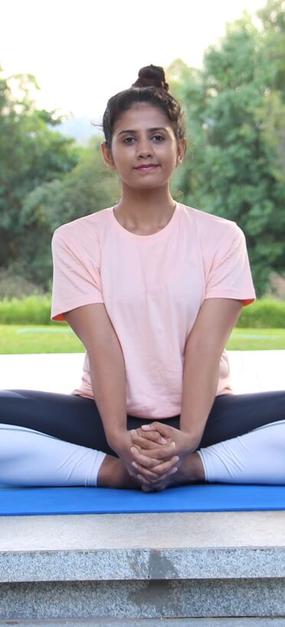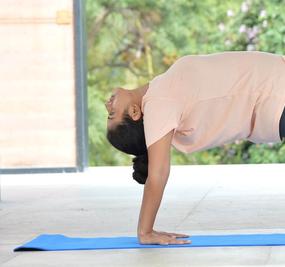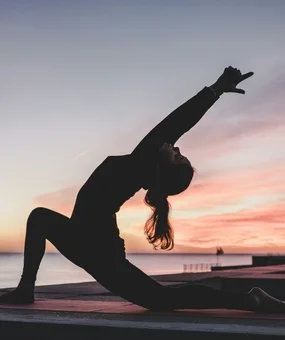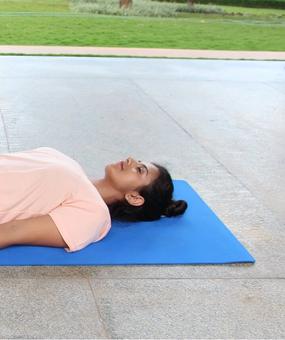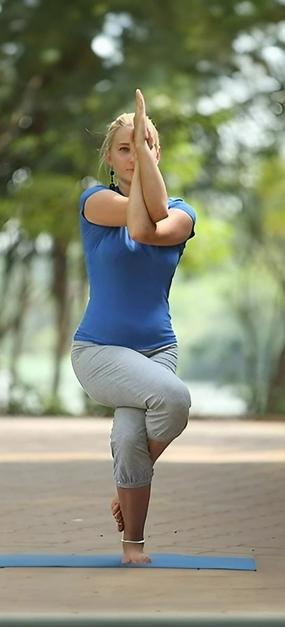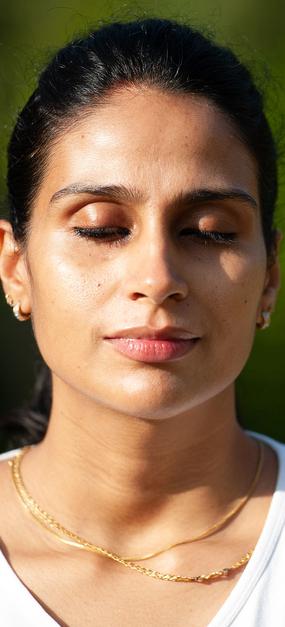Sitting in a chair may sound very easy and comfortable. But sitting in an imaginary chair might be a little challenging! And this is exactly what we do in Utkatasana or Chair Pose. The literal meaning of Utkatasana is intense posture or powerful posture.
(Utkat=Intense, Powerful; Asana= Posture/Pose; pronounced as U-t-kat- asana).
You need just a little bit of determination to stay longer in the Chair Posture. Make sure you read the contraindications before you start.
How to do Utkatasana (Chair Pose)
- Stand erect with your feet slightly apart.
- Stretch your hands to the front with palms facing downwards. Do not bend your elbows.
- Bend the knees and gently push your pelvis down as if you are sitting in an imaginary chair.
- Be comfortable or at least try to be! To get a better feel of the Chair Pose, imagine reading a newspaper or typing on a laptop as you remain seated.
- Ensure that you keep your hands parallel to the ground.
- With awareness, sit straight and lengthen your spine. Relax.
- Keep breathing and flip through the pages of the newspaper, enjoying national and international news.Chair Yoga Pose | Utkatasana Yoga Pose
- Sink deeper into the chair by gradually going down but ensure that your knees don’t go beyond your toes.
- Keep going down slowly and then sit down in Sukhasana (cross-legged posture). If you want, you may lie down on your back and relax.
Tip from Sri Sri Yoga expert: Smile throughout. It will help you to hold the posture longer. It is a good idea to do the Chair Pose after you have finished all the other standing yoga postures. You can then start with the sitting yoga postures or the lying down yoga postures.
Benefits of Utkatasana (Chair Pose)
- Exercises the spine, hips and chest muscles
- Helps strengthen the lower back and torso
- Tones the thigh, ankle, leg and knee muscles
- Balances the body and brings determination in the mind
Contraindications of the Utkatasana (Chair Pose)
- Do not practice this yoga posture if you have chronic knee pain, arthritis, sprained your ankle; any knee problem or damaged ligaments; headache or insomnia (sleeplessness).
- Take special care and proceed gently with this yoga posture during menstruation or if you have pain in the lower back.
View All – Standing Yoga Postures
All Yoga Poses Previous yoga pose: Garudasana Next yoga pose: Konasana


